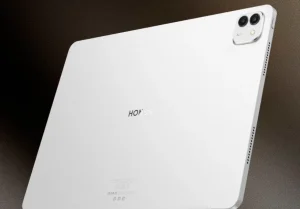Most Offices Age Badly—Here’s How to Futureproof Yours
When we walk into an office built a decade ago, it feels like relics of a different era. The row of identical desks, inflexible meeting rooms, ageing AV setups, and the faint hum of fluorescents are not outmoded. What was once considered cutting edge now struggles to support modern workflows and employee expectations.
Most offices age badly because they weren’t designed to evolve. Instead of being an adaptable platform that grows with the team, offices become fixed snapshots of a specific era and work culture. Thus, the office interior designers are rethinking the role of the office and how to futureproof it for the years ahead. So, let’s explore some solutions.
Why Most Offices Obsolete Quickly?
Before getting into the solution, let’s examine why so many offices become outdated within a few years of being designed.
Fixed Layouts
Fixed layouts are one of the most common culprits. Offices that lock teams into a fixed layout, such as rows of desks, assigned seating, and closed meeting rooms, leave no room for change. When the team scales up, restructures or opts for a hybrid mode, the inflexible spaces become a constraint instead of a resource.
Technically Unadvanced
Technology is the backbone of an organisation, and when that is not updated, it hinders growth. Things like permanently mounted projectors, wired conference phones, and AV setups can go outdated quickly. In today’s AI times, yesterday’s investment becomes today’s limitations.
Aesthetic Without Purpose
Offices are often customised with contemporary designs. They tend to get out of fashion very early. An office styled around industrial chic, or minimalism can look good today, but can seem tired tomorrow. Also, if the aesthetics fail to evolve or reflect the brand’s identity, the interiors can become disconnected or stale.
Cultural Discord
As companies grow, they transform their culture, values and operations. For instance, a startup’s scrappy culture cannot suit a grown company in its mature phase. This can feel like a company misaligned with its culture and values. Also, a shift to remote work can make the traditional office design feel empty. So overall, an office space that doesn’t flex with the organisation’s culture can end up out of sync with how it actually operates.
Ignoring Hybrid or Remote Needs
The rapid rise in the remote and hybrid work system has exposed the shortfalls of a traditional office design. Poor acoustics, bad lighting and insufficient technology in meeting rooms can make virtual meetings a pain. Without support for remote and hybrid dynamics, traditional offices isolate a part of the workforce and become underutilised. Thus, offices built for in-person collaboration struggle to support remote participants.
How to Futureproof Your Office?
Designing a future-proof office is all about adapting designs that are tech-ready, inclusive and culturally aligned. Let’s see how to build a workspace that evolves gracefully with time.
Design for Modularity
A fixed layout is the enemy of long-term usability. Hence, design a modular environment that can be easily shifted with the needs of your team. You can make use of modular furniture and foldable partitions to support different team sizes and workflows. Using height-adjustable desks, collapsible tables, and lightweight seating can promote flexibility. Also, reimagine the spaces as multi-use zones, for instance, a lounge area that doubles as a casual meeting spot.
Embrace Tech-Ready Designs
Instead of overloading the room with hardwired tech, aim for flexible options. You can opt for ample power outlets, universal docks, and strong wireless networks that allow employees to plug in anywhere. Use software-based collaboration tools like Teams, Zoom, or Meet to evolve with the workflow. Install modular and easy-to-update AV systems that can help avoid expensive built-ins. An organisation that evolves with technology can easily be future-proof.
Support Hybrid and Asynchronous Work
As we know, technology plays a crucial role, equipping your spaces with seamless collaboration between in-office and remote employees is inevitable. Thus, investing in high-quality microphones, cameras, and lighting is essential. You can also create “meeting booths” or focus pods for meetings and video calls. Apart from these, quiet zones or solo workstations are also helpful for deep concentration. Designing a hybrid doesn’t mean just accommodating remote, it means making digital collaboration equal to physical presence.
Prioritise Sustainability and Employee Well-being
The future workspace emphasises both the employee and the planet’s well-being. Therefore, using sustainable materials, recyclable furniture, and energy-efficient systems plays an important role here. Also, incorporating natural light, real plants and acoustic design can help reduce stress and boost productivity. Additionally, including wellness areas like meditation rooms, nap pods, or access to outdoor spaces will also improve employees’ mental and physical health. Workspaces that support employees holistically are more likely to attract and retain talent.
Reflect and Evolve with Company Culture
Your office is not just a place where employees work, but a reflection of your company’s value and identity. Thus, you must ensure it evolves with your company’s culture. For that, you can design spaces that display your missions, murals, and revolve team presentations. This will help to reinforce the purpose. You can also leave space for co-creations like walls, boards or zones, for teams to write posts and contribute to the work narratives. As a space that evolves with people will always feel relevant.
Conclusion
Futureproofing your space doesn’t mean following every trend; it just means designing for adaptability. Instead of perceiving your office as a finished product, treat it as a platform for ongoing change. Invest in flexibility by incorporating advanced technology, supporting a hybrid work model, embracing modular furniture, and focusing on people and sustainability, not just aesthetics.
Because we live in a world where everything from technology to team dynamics can change overnight. And office interior designers in Gurgaon are experts in designing offices that can shift with it will thrive.














Post Comment